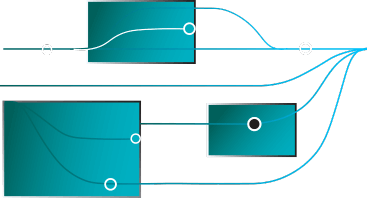Regression Testing Vs Retesting: Key Differences

Software development is a journey filled with challenges, and one constant companion on this path is the presence of errors, bugs, and uncertainties. However, what truly separates exceptional software from the rest is how efficiently these challenges are managed and resolved. This is where a well-structured testing plan becomes paramount, and at the heart of this plan lie two essential practices: Regression Testing vs Retesting.
In this blog, we will understand
What is Regression Testing?

With more businesses rushing to churn out high-end digital applications to remain competent in their key markets, there has been a phenomenal rise in the use of software test automation. It helps companies keep up with the growth without compromising on the quality of the applications they launch to the market.
Studies estimate that globally there will be USD 28.8 billion worth of market size for automation testing by 2024!
The automation testing approach eliminates a lot of effort and cost that often plagues manual testing efforts. It also avoids bias that may occur due to human judgment of scenarios. Automation testing also empowers continuous development and deployment of software in a productized form which is a critical requirement for faster release of digital applications in the market now.
But does this mean the end of the practice of testing manually? The answer is no.
SUGGESTED READ - What is Regression Testing? The Ultimate Guide with Examples
What is Retesting?
Contrary to regression testing, retesting is done to test whether a particular feature or functionality that has been developed, tested, and released is working as expected. It’s generally carried out after significant modifications to the code or software are made.
When running retests, your goal is to determine whether any known bugs have re-emerged or whether new bugs have appeared.
SUGGESTED READ - What Is Retesting? All About Retesting in Software Development
When Is Retesting and Regression Testing Done?
Testing Type |
Scenario |
Description |
|
| Regression Testing | New Feature Implementation | Ensures that the code needed for a new feature functions properly, even after refactoring or removing code. | |
| Updates and Patches Application | Verifies compatibility of changes with existing software, can be performed before or after installation. | ||
| Release of a New Product | Ensures no unintended consequences are associated with a new release of the product. | ||
| Retesting | Bug or Issue Identification | Used to verify that identified bugs or issues no longer exist in the software. | |
| Problems with Reports | Ensures that issues related to reports are resolved and the reports function correctly. | ||
| Changes in Business Logic | Validates that changes in business logic, such as alterations in report numbers or database fields, do not affect the overall functioning of the software. |
Difference Between Retesting and Regression Testing
These are similar-sounding terms but not interchangeable. Retesting ascertains that a specific code fix works as expected.
Regression testing, on the contrary, ensures that the entire system works as designed after changes. Regression tests, as such, have a much wider scope of activity when compared to retesting.
Retesting usually takes place near the time of code development. Contrarily, regression testing is further along the development lifecycle. These tests need more time for execution as compared to retests. Complete regression testing demands testing for all aspects of the system and needs adequate, system-wide monitoring.
Do more with Test Automation
Discover more ways to add ‘low-code no-code‘ test automation in your workflows

Regression Testing vs Retesting: The Differences
Regression Testing |
Retesting |
|
| Automation | Considering that the testing suite expands with the enhancements, the automated regression testing approach seems viable. | Because the motive is to fix the pre-existing areas, automating the methods seems unnecessary and implausible. |
| Involvement | Regression testing must be a perpetual monitoring process since updates, upgrades, and patches are constantly unearthed to keep up with the dynamic market. | Since retests depend on identifying the bugs in the first place, retesting may or may not be employed in each testing cycle. |
| Types | Corrective, selective, progressive, partial, unit, retest-all. | No types as such; however, the practice to re-test can differ according to the needs. |
| Nature | Since it’s perpetual, regression testing is often termed generic testing. | Since its implementation is specific to the identified defective area, it’s often termed planned testing. |
| Defect Verification | NA | A part of retesting process |
| Applicability | Fixated on passed test cases. | Fixated on failed test cases. |
| Priority | Low (exceptions surface during parallel testing) | High |
| Accuracy | To predetermine test cases, each methodology can’t be implemented with the same approach to ensure consistency. | Since the test strategies are often modified based on earlier findings, there is little chance of repetition. |
| Example | After adding a new feature, the entire application is tested to ensure existing features still work. | After fixing a specific bug, only the particular feature where the bug was found is retested. |
Conclusion
Both practices are vital for delivering high-quality software that meets user expectations and maintains a bug-free environment. Regression testing ensures the overall stability of software by verifying its functionality after changes. While retesting focuses on specific modifications. The choice between them depends on project needs, with automation playing a key role in regression testing.
Geosley Andrades
Director, Product Evangelist at ACCELQ
Geosley is a Test Automation Evangelist and Community builder at ACCELQ. Being passionate about continuous learning, Geosley helps ACCELQ with innovative solutions to transform test automation to be simpler, more reliable, and sustainable for the real world.
Discover More
 Manual Testers: Key Players in Test Automation
Manual Testers: Key Players in Test Automation
Manual Testers: Key Players in Test Automation
 Quality Engineering Trends in Test Automation
Quality Engineering Trends in Test Automation


